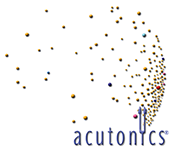Ellen F. Franklin, PhD
Oriental Medicine Journal, 2011
All of the photos used to illustrate the article were taken by Ellen Franklin in her travels.
Ellen developed this article through an independent study that arose from a four-day seminar facilitated by Saybrook faculty member Dr. Ruth Richards, entitled Finding Our Place in the Universe: Believing in Einstein, Darwin, and God.
This article explores strategies to deepen our connection to the natural world, with a particular focus on the archetypal significance, correspondences, and cross-cultural symbolism of the tree. I propose that trees provide us with a way to access our relationship to the greater universe, and to understand the correspondences among the human body, the Earth body, and the heavens. Does our understanding of the philosophical tenet as above so below, as within so without take on new significance and meaning when we examine the inherent nature of the trees that surround us? Does deepening our understanding of the wisdom and mythos of trees provide a lens to embrace the wisdom of Nature, expand consciousness, and develop new ways to cope with the rapidly accelerating Earth changes? Can trees help us to remember what it means to be whole? An exploration of trees, ecopsychology, depth psychology, Jungian archetypes and symbols, in the context of my work with East Asian Medicine and sound vibration, provides a foundation for this inquiry.
 The Tree of The Serpent Goddess
The Tree of The Serpent Goddess
The Serpent Goddess carries the earth on her head.
Disturb her, and the whole earth shakes with fearful earthquakes.
A tree grows silently above the Serpent Goddess,
who gathers up the entire earth and guards
her precious eggs inside her coils
(Shyam, Bai, & Urveti, 2006).
The trees outside my window beckon, inviting me to come out and play amidst their waiting arms. Walking in the high alpine forest near my home, cycles of death and renewal are everywhere. Decaying trees provide homes for animals, insect colonies, moss, and fungus. From the seeds of the giant nearby pines, I discover a nursery of baby pines. When I long for the ocean of my youth, the wind in the aspens reminds me of the waves’ ebbs and flows, and I find solace. Ancient hieroglyphics embedded in the bark hold nature’s secrets and mysteries from the ages. Trees speak to one another. They stand as governors of the world, ultimately controlling life on land and in the oceans; they are a key to our survival (Tudge, 2006).
Carl Jung described the forest as dark and impenetrable, likening it to the sea, the unknown, mysterious, a synonym for the unconscious. Standing within Jung’s forest is the mighty oak, which he describes as the prototype of the self, a symbol of the source and goal of individuation that represents the unconscious core of the personality (Jung, 1967). Jung wrote a great deal about the tree, relating it to the mandala, which he interprets as representing a cross section of the self, while the tree is the self in profile, symbolizing the process of growth (CW 13, Para. 304).
Individuation is a primary theme in Jungian psychology. It is a life-long journey toward center, a place of meaning and fulfillment where people are able to accept who they are and find balance among their disparate parts (Franz, 1998).
In my own work with East Asian Medicine and sound vibration, there is a deep recognition that the Earth body and the human body are interrelated systems which must be brought into proper balance to achieve resonance among body, mind, and spirit. I propose that an archetypal understanding of trees will help to illuminate the journey toward individuation, fostering the development of a deeper ecological consciousness and enhanced well-being.
Jung identified archetypes as being timeless; expressed through dreams, myths, and fairy tales, they reside in the collective unconscious. All mythology, legends, and fairy tales might be viewed as a projection from the collective (Jung, 1980). Marie-Louise von Franz writes that within the threads of these simple stories we are provided with a pure view of the psychic processes of the collective unconscious (1996, pp. 1- 2). Ultimately, each story, filled with turmoil, and travail, leads to the discovery of the Self (1996, p.197). These patterns of energy that reside in our psyche, when examined for the hidden yet universal messages, provide keys to the processes of individuation in our journey toward wholeness.
…the self has somewhat the character of a result, of a goal attained, something that has come to pass very gradually and is experienced with much travail. So too the self is our life’s goal, for it is the completest expression of that fateful combination we call individuality, the full flowering not only of the single individual, but of the group, in which each adds his portion to the whole (Jung, 1972).
From a Jungian perspective, archetypes are unknowable. Their existence is inferred from their manifestations. It is the specific attributes to which archetypes give rise that make the image of the tree so powerful; it comes into manifest form through ritual and spiritual traditions from the earliest time. There are numerous parallels, consistent images, rituals, and traditions that extend across the centuries and are experienced regardless of class, creed, race, geographical location, or historical time.
All such universal patterns of behavior are evidence of archetypes at work. The point is that what any one of us experiences in life is not determined merely by our personal histories. It is also fundamentally guided by the collective history of the human species as a whole. This collective history is biologically encoded in the collective unconscious, and the code owes its origins to a past so remote as to be shrouded in the primordial mists of evolutionary time (Stevens, 2002).
Trees 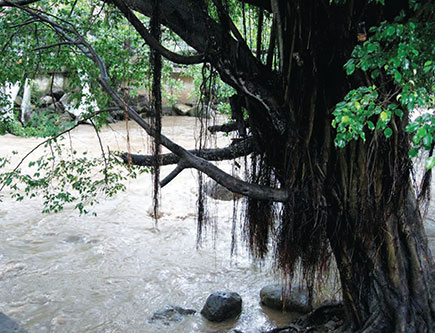 provide for humanity, giving us fire, shelter, a way to cross water, and the means for transportation, including wheels, carts, bridges, and boats (Hageneder, 2005). They symbolize birth, death, and renewal, standing as powerful symbols of growth, maturation, reach, and grounding. “The tree shows us how, from a tiny, bare seed of potential, the self can come into existence, centered and contained, around which occur incessant processes of metabolism, multiplying, perishing, and self renewal” (The book of symbols, 2010). Trees tell us stories of what it means to be sturdy, to create, to change with the seasons, flourish, and hold space. Our bodies physically resemble trees with our differently shaped trunks, our legs rooting us to the Earth, and our arms stretching out to the sky. As children we grew stronger and more dexterous as we climbed trees, or lived in them, creating tree houses, or magical swings from which we are able to jump into the lake or river.
provide for humanity, giving us fire, shelter, a way to cross water, and the means for transportation, including wheels, carts, bridges, and boats (Hageneder, 2005). They symbolize birth, death, and renewal, standing as powerful symbols of growth, maturation, reach, and grounding. “The tree shows us how, from a tiny, bare seed of potential, the self can come into existence, centered and contained, around which occur incessant processes of metabolism, multiplying, perishing, and self renewal” (The book of symbols, 2010). Trees tell us stories of what it means to be sturdy, to create, to change with the seasons, flourish, and hold space. Our bodies physically resemble trees with our differently shaped trunks, our legs rooting us to the Earth, and our arms stretching out to the sky. As children we grew stronger and more dexterous as we climbed trees, or lived in them, creating tree houses, or magical swings from which we are able to jump into the lake or river.
Contained within the tiny seed we also find the potential of the entire Universe. The tree stands as a connectionto all life, reaching up to the heavens, its roots stretching down to the deep realm of Hades. In this imagery, it is easy to imagine the tree’s archetypal association with spiritual growth linking us to the development that occurs deep within the murky darkness of our roots, to the growth and peace that comes from the harmonic resonance of being in alignment with the seasons and the cycles of nature. Each leaf, branch, and twig offers up a unique form, yet is part of a greater whole, a dynamic system of infinite possibilities for growth and transformation (Richards, 2001).
On every continent, and in most religious traditions, there are images of sacred groves as places of sanctuary, or as home to the varied species of trees associated with the Tree of Life and the Tree of Knowledge (Hageneder, 2005). Imagery of trees is found in many fairy tales collected by the brothers Grimm, including The Handless Maiden, in which an orchard and a sacred grove aid the beautiful young maiden who was betrayed by her father, the miller. Seeking wealth, the miller makes a bargain with the devil. When the devil comes to claim her, she is protected by her virtue and purity. Furious, the devil commands the father to chop off her hands, which he does to protect himself.
The maiden, severed hands strapped to her back, sets off on her own, wandering through the forest. Hungry and tired she comes upon a king’s protected orchard, which is filled with beautiful ripe pears. Her angel of protection assists her in crossing the mote into the garden where she is able to eat a single pear. The king eventually weds her and, through a series of events orchestrated by the devil, she is cast out again and finds solace in a sacred grove. It is here where her true healing begins and her severed hands grow back (Grimm & Grimm, 1994).
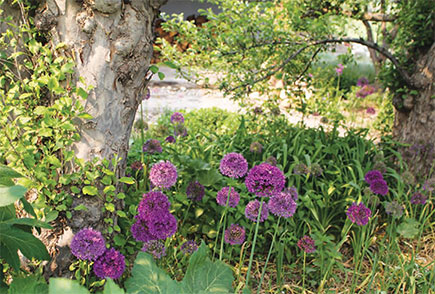 Cross-cultural mythology is filled with images that demonstrate the deep significance of trees. In the Mexican and Mayan cultures, the world-tree stands at the center of the universe, its roots in water and its branches reaching up to Heaven. The Yggdrasil of Norse mythology is a giant Ash tree that shelters the world. Among the Druids, the mighty oaks are a source of knowledge, wisdom, durability, power, and truth. The oak was also associated with Zeus, the Thunder God, as it is struck by lightening more than any other tree (Hageneder, 2005; Powell, 1982). When Phaeton is unable to control the four-horse chariot of the sun and the Earth is being destroyed, Zeus shoots him down with a thunderbolt. The nymphs who recovered Phaeton’s body were so bereft that they became trees and wept over him. Their tears became amber, the fossilized resin of trees (Carey, Franklin, Ponton, Ponton, & MichelAngelo, 2010).
Cross-cultural mythology is filled with images that demonstrate the deep significance of trees. In the Mexican and Mayan cultures, the world-tree stands at the center of the universe, its roots in water and its branches reaching up to Heaven. The Yggdrasil of Norse mythology is a giant Ash tree that shelters the world. Among the Druids, the mighty oaks are a source of knowledge, wisdom, durability, power, and truth. The oak was also associated with Zeus, the Thunder God, as it is struck by lightening more than any other tree (Hageneder, 2005; Powell, 1982). When Phaeton is unable to control the four-horse chariot of the sun and the Earth is being destroyed, Zeus shoots him down with a thunderbolt. The nymphs who recovered Phaeton’s body were so bereft that they became trees and wept over him. Their tears became amber, the fossilized resin of trees (Carey, Franklin, Ponton, Ponton, & MichelAngelo, 2010).
The story of the generosity and abiding love between Philemon and Baucis is told in Ovid’s Metamorphoses. Although poor beyond measure, this loving couple invite two strangers into their home and offer them a respite, meal, and drink from their meager provisions. The strangers are Jupiter and Mercury, turned away from many other homes before being invited into this humble dwelling. As a reward for their kindness Jupiter turns their hut into a magnificent home and asks what other gift he might bestow upon them. They had only one wish, that their lives should end at exactly the same time so that they never would have to live without each other. After serving Jupiter for many long years, they were simultaneously changed into an oak tree and a linden tree; standing side-by-side, they lend shade and support to each other, representing one of the most enduring love stories of all time (Carey et al., 2010). They also provide a glimpse into the immortal nature of trees, where some species live for hundreds if not thousands of years.
Despite the rise in patriarchal cultures, The Tree of Life is often associated with the divine female and is related to the Mother Goddess, the mother of creation, birth, and healing, linking Heaven, Earth, the Underworld, and all of life (Hageneder, 2005; Neumann, 1974). In many myths the Tree of Life emerges from the symbolic center of the Universe, the world navel from which all things emerge (Campbell, 2008).
 As depicted in The Tree of The Serpent Goddess, quoted above, we are provided with an image of the tree as feminine and maternal. It can also serve as a place of birth, transformation, and renewal. Leto gave birth to Apollo and Artemis under a palm; the holy tree shaded Maya, at the birth of the Buddha. In the Hebrew tradition, Adam was created out of the Earth of the Tree of Life; and in this mythic representation you might view Adam as standing in the same relationship to the tree of life as the Buddha to the Bodhi Tree (Jung, 1967).
As depicted in The Tree of The Serpent Goddess, quoted above, we are provided with an image of the tree as feminine and maternal. It can also serve as a place of birth, transformation, and renewal. Leto gave birth to Apollo and Artemis under a palm; the holy tree shaded Maya, at the birth of the Buddha. In the Hebrew tradition, Adam was created out of the Earth of the Tree of Life; and in this mythic representation you might view Adam as standing in the same relationship to the tree of life as the Buddha to the Bodhi Tree (Jung, 1967).
Trees are a source of herbal remedies, food, and drugs, and were an integral part of the early medicine of Hildegard von Bingen, a twelfth-century Benedictine abbess who was a visionary, mystic, healer, and musician. She wrote extensively about the use of plants, trees, and the elements; and she advocated a balanced life, and time in the natural world, as being key to well-being (Streholw & Hertzka, 1988; Von Bingen, 1998). One of her most beautiful musical compositions, O nobilissima Viriditas, is about the sanctity and beauty of the natural world.
In Medieval alchemical texts the tree represents the transformation process, occurring continually and constantly. Jung, citing Zosimos, writes that “a well tended tree, a watered plant, which beginning to ferment because of the plentiful water and the sprouting in the humidity and warmth of the air, puts forth blossoms and fruits by virtue of the great sweetness and special quality of nature” (CW 13, Para. 354). The tree became a central symbol of alchemy because it depicts an intense inner life, follows its own laws, and can come to represent the evergreen of the individual. Awakening to new life, suffering, mythic suspension, sacrifice, ordeal, execution, and reversal are all aspects of the tree. It holds us in death, serving as a place of burial, bodies cradled in the tree’s outstretched limbs, or curled up in a hollowed out trunk like an embryo awaiting rebirth. The tree stands here for eternity reaching down into the underworld and up into the heavens (The book of symbols, 2010).
It is not surprising that Mercury comes to be associated with alchemy, as there are often connections made between the mythological Mercury/Hermes and the semi-mystical, thrice born, Hermes Trismegistus, who is credited with writing,
True it is, without falsehood, certain and most true.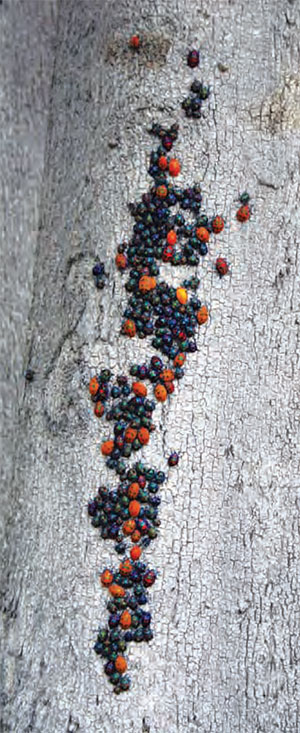 That which is above is like to that which is below, and that which is below is like to that which is above, to accomplish the miracles of one thing. And as all things were by contemplation of one, so all things arose from the one thing by a single act of adaptation (Linden, 2003).
That which is above is like to that which is below, and that which is below is like to that which is above, to accomplish the miracles of one thing. And as all things were by contemplation of one, so all things arose from the one thing by a single act of adaptation (Linden, 2003).
This vision of a straight tree touching the heavens and connecting back to Earth has been likened to the axis mundi, the cosmic pillar that reaches up to the heavens, around which the entire universe revolves (Powell, 1982).
Eliade provides us with a prospective on the Cosmic Tree as the pillar of the world, arising from a central point that connects the three cosmic regions and provides access to the sky, or primordial paradise. In other cultures, it is a ladder made from the wood of a sacred tree. The imagery of the Cosmic Tree or World Tree is found throughout the ancient world. It is present in East Asian civilizations, in Babylon, Nippur, and Larsa. It is also found in India, Central and North Asiatic shamanism, and in the Americas. Eliade proposes that the cosmic axis, the seven celestial spheres (representing the seven known planets), the chakras, and the central pillar, which reaches from a central point toward the Pole star, are images which relate to and are contained within the mandala (Eliade, 1991).
Clearly, the depth of this universal imagery is one of the reasons that the mandala has proven so powerful therapeutically. Jung believed that it reduces confusion, brings order, balance, and wholeness; it also has the capacity to create awareness of the collective unconscious as an autonomous entity (1990, CW 9.1 Para. 645). “The mandala shows, then, the union of opposites and is embedded between yang and yin, heaven and earth, the state of everlasting balance and the immutable duration” (Para. 637).
In some approaches to the Five Element theory of East Asian Medicine, the human body is also viewed as a mandala; the Earth element is placed in the center surrounded by the elements of Wood, Fire, Metal, and Water. Through the theory of correspondences, which is integral to Chinese philosophy, the body is likened to a garden. Disease of any kind arises when the body’s equilibrium is out of balance, or there is a disharmonious pattern. Just as a tree will not prosper when there is a lack of sunlight, depletion of soil, or insufficient moisture, the life force energy of the human, our Qi, requires that each of the elements be in proper relationship (Beinfield & Korngold, 1991). Often an imbalance will occur during a particular season, which will weaken that element in the person’s energy. The Earth element is associated with late summer, with the harvest and the tempting smell of sweet fruits as mother Earth offers her bounty to us without hesitation (Kaatz, 2009). An imbalance in the Earth Element will result in low energy, lack of immune function, general deficiency, stagnation, stress, and constriction. There might be pain in the sacrum, legs, feet, and hips, a lack of grounding, or not feeling centered and connected to the Earth (Carey & De Muynck, 2007; Carey et al., 2010).
Anthony Stevens identifies eating from The Tree of Knowledge and the subsequent expulsion from the Garden of Eden as a parable for the emergence of ego-consciousness; harmonious unity is lost as Adam and Eve discover that the dualistic nature of the world outside the garden contains good and evil, love and hate, pleasure and pain. “The Garden of Eden is, of course, a mandala, with its four rivers and Tree of Life at the centre” (Stevens, 2002).
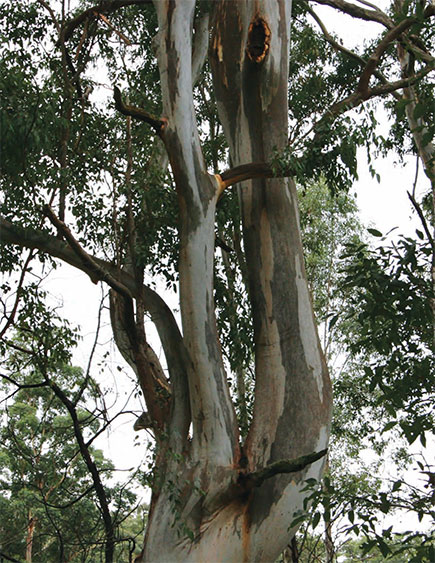 We have all been expelled from the Garden of Eden, after eating of the Earth’s bountiful harvest. It manifests within us as increased stress, and feelings of deep loss. No longer are we able to experience harmonious unity with the natural world. It is as though the axis mundi split when we were expelled from the Garden. Is there a way to shift something that is so deeply embedded in our psyche to foster eco consciousness rather than ego consciousness? Solutions to the current internal and external environmental crises call for us to remember the wisdom of the tree. Standing in a sacred grove amidst the giant pines or quaking aspen, there are natural harmonies and beauty that remind us of the inter-relatedness of all things (Richards, 2001).
We have all been expelled from the Garden of Eden, after eating of the Earth’s bountiful harvest. It manifests within us as increased stress, and feelings of deep loss. No longer are we able to experience harmonious unity with the natural world. It is as though the axis mundi split when we were expelled from the Garden. Is there a way to shift something that is so deeply embedded in our psyche to foster eco consciousness rather than ego consciousness? Solutions to the current internal and external environmental crises call for us to remember the wisdom of the tree. Standing in a sacred grove amidst the giant pines or quaking aspen, there are natural harmonies and beauty that remind us of the inter-relatedness of all things (Richards, 2001).
Michio Kaku uses a musical analogy to explore the laws of physics, relating them to harmony. “The universe is a symphony of strings. And the ’Mind of God,’ which Einstein wrote eloquently about [sic], is cosmic music resonating throughout hyperspace”(Kaku, 2005).
The resonant patterns that reside in our earliest understanding of trees offer a ladder of wisdom to climb out of the current global environmental mess and to access the deep insights of the cosmos (Walsh & Vaughan, 1993). By tending our own internal garden and rebalancing the Earth element within us, there is the possibility of returning to the Garden.
Just as the acorn contains the potential of the giant oak, the archetypal tree provides a frame for deep transformation of our interior landscape, which demands a reexamination of our relationship to the Earth. Kuhn proposes that the transformation of human consciousness arises from expanding our definition from one of vertical transcendence to recognition that true transformation is rooted in the cosmos. “A wider identification with the natural world, through an awareness of our interdependence and interconnectedness with it, transforms human consciousness horizontally. In ecological-humanistic psychology, self-actualization involves Self-realization, a widening and deepening of the self” (Kuhn, 2001).
One way to develop an ecological consciousness is through direct experiences with nature, exploring the plants, animals, and beauty of the natural forest. Swan points out that the vast majority of contemporary psychology fails to recognize the critical importance of this relationship. Without careful fostering, and recognition of our unique kinship with the natural world, that we are not over nature but a part of nature, we can neither control nor fight the processes, which continue to unfold; and catastrophic crises are likely to continue.
G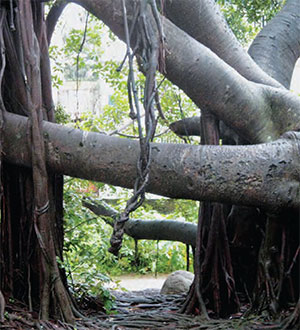 rowing sensitivity to our ecological peril— which most deeply is a crisis of consciousness and culture—may call forth transformations in awareness and social practice, changes that foster healthy, just, and intimate relationships between humankind and the natural world. Just as a mutually enhancing relationship between people depends on ongoing experiential contact and renegotiation of the relationship based on such experience, so also in our relationships with the rest of nature (Adams, 2006).
rowing sensitivity to our ecological peril— which most deeply is a crisis of consciousness and culture—may call forth transformations in awareness and social practice, changes that foster healthy, just, and intimate relationships between humankind and the natural world. Just as a mutually enhancing relationship between people depends on ongoing experiential contact and renegotiation of the relationship based on such experience, so also in our relationships with the rest of nature (Adams, 2006).
John Davis identifies the need for a fundamental shift in our relationship with nature, which is based on the recognition of nonduality between human and nature.
In virtually all the descriptions of nonduality throughout the world’s spiritual wisdom traditions, nonduality has been seen not as an end to action, but as the beginning of a new source of action that does not place self-interest (no matter how expanded) at the center” (Davis, 1998).
In her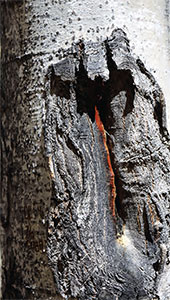 exploration of the adaptive qualities found in the beauty of nature Ruth Richards identifies humans as “open systems in resonant interaction with our world.” She proposes that we are capable of reframing our relationship to nature through recognition of the resonant structures, beauty, and the fractal forms found there. Nature can change us, increase our awareness, and help us to recognize our integral role in the complex systems, which are part of coming into alignment with the greater whole (Richards, 2001).
exploration of the adaptive qualities found in the beauty of nature Ruth Richards identifies humans as “open systems in resonant interaction with our world.” She proposes that we are capable of reframing our relationship to nature through recognition of the resonant structures, beauty, and the fractal forms found there. Nature can change us, increase our awareness, and help us to recognize our integral role in the complex systems, which are part of coming into alignment with the greater whole (Richards, 2001).
Encouraging people to deepen their connection to the natural world and to recognize that the body is part of an integral system and is connected to the greater whole is key to my work with East Asian Medicine and sound vibration. The cosmic axis or central pillar of the tree can be found in the trunk of the human body. It is represented in the chakras, which rise from the root to the crown of the head. In East Asian Medicine it is represented in the combination of the Du Mai and Ren Mai, which is also known as the microcosmic orbit. The Du Mai is called the Governing Vessel, and the Sea of Yang. It represents a pillar that provides strength to the spine and the core of the body, strong masculine yang energy that aids perception, higher knowledge, and spiritual growth. The Ren Mai is known as the Conception Vessel, and the Sea of Yin. It coordinates and directs all of the yin functions and activity in the body, providing creative support, vitality, feminine energy, and nourishment. Together these vessels represent an energetic pathway within the body that supports our connections to Earth, while providing access to the higher heavens. Like a tree rooted in the ground, we are able to grow stronger and make deeper connections to our cosmological self.
In the Eastern medical tradition, the microcosmic orbit represents the macrocosm and the original Qi . It is like the elliptical orbits of the planet around the Sun, circulating through our bodies, with our heart at the center, mirroring the heart of our universe and the ongoing creative process of the Universe which gives birth again and again.
The macrocosm comes from the original chi. This primal chi transforms itself into multiple variations, following the order that Tao gives birth to one, the principle of singularity, neutrality and harmony. One gives birth to two, the principle of duality. Two gives birth to three, the principle of multiplication. Three gives birth to all things and all beings (Ni, 1979).
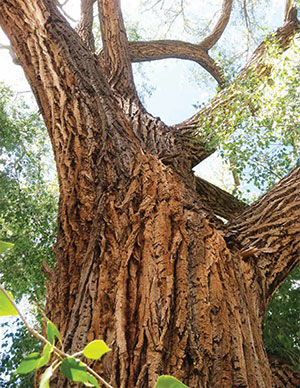 Once again we hear echoes of thrice-born Hermes Trismegistus and the deep connections between all that is above and all that is below. In both the Western tradition and the ancient texts from China we see the relationship between mind and body, that the body is a microcosm, in a dynamic relationship with the natural world. Citing the inner cannon of the Yellow Emperor,
Once again we hear echoes of thrice-born Hermes Trismegistus and the deep connections between all that is above and all that is below. In both the Western tradition and the ancient texts from China we see the relationship between mind and body, that the body is a microcosm, in a dynamic relationship with the natural world. Citing the inner cannon of the Yellow Emperor,
The body was defined not by what sets it apart but by its intimate, dynamic relationship with its environment. ‘Covered over by heaven, borne up by Earth, among the myriad things none is more noble than man. Man is given life by the ch’I of heaven and earth, and grows to maturity following the norms of the four seasons.’ . . . Life is maintained not merely by the internal circulation of ch’I, but by continuous dynamic interchange between body and cosmos. Shared vital rhythms make the body correspond to heaven and earth, and them in accord (Lloyd & Sivin, 2002).
Numerous scientists cite that we are made of the same materials as the stars, and that we exist within the universe as part of an interconnected whole (Davies, 1992; Kaku, 2005; Roszak, 1992). Sound can serve as a carrier wave, when it is applied to the chakras and acupuncture points of the body. Our body is at least seventy percent water, and sound travels four times faster in water than in air, so that when sound vibrations are applied to the body it awakens the connections among our lower, middle, and higher Self (Carey et al., 2010).
Whether you invoke the wisdom of the depth or transpersonal psychologists, ecopsychologists, or East Asian Medicine, trees and the natural world provide us with a visceral opportunity to experience holism and come to center. Working with the universal sound of Ohm also connects us to the greater wisdom of the Universe, rooting us here on Earth but inviting us to extend beyond our limitations, to feel what it means to be whole.
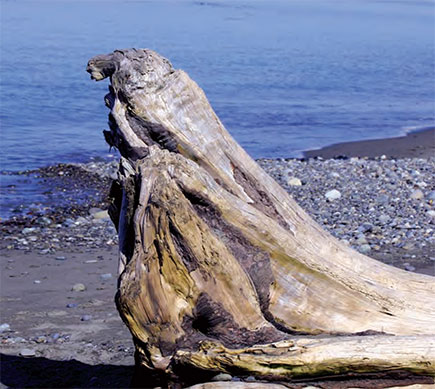 In the Acutonics system, the sound healing methodology that I co-developed and teach, Earth is our home tone. It represents the Earth travelling through the four seasons. Its frequency was derived from Johannes Kepler’s original calculations of the velocity of a planet travelling around the sun. Has Cousto, a Swiss mathematician, converted velocity to Hertz, and this became the frequency for our Earth tuning forks. It is approximately a C sharp. Almost every spiritual tradition has recognized the deep connection between the human body and the Earth body. In our work with sound, by layering high, middle, and low frequencies on the body, we invite a remembrance of what it feels like to travel to the stars.
In the Acutonics system, the sound healing methodology that I co-developed and teach, Earth is our home tone. It represents the Earth travelling through the four seasons. Its frequency was derived from Johannes Kepler’s original calculations of the velocity of a planet travelling around the sun. Has Cousto, a Swiss mathematician, converted velocity to Hertz, and this became the frequency for our Earth tuning forks. It is approximately a C sharp. Almost every spiritual tradition has recognized the deep connection between the human body and the Earth body. In our work with sound, by layering high, middle, and low frequencies on the body, we invite a remembrance of what it feels like to travel to the stars.
Trees provide us with a deep knowledge inviting us to find our place in the greater Universe. They provide symbolic representation of the cycles of nature, and the greater cosmic processes of birth, death, and renewal. From the wisdom of the natural world, and the life-giving trees, it is possible to understand that we are always growing, evolving, and changing. There is no separation between a human and a tree, a galaxy or a cell. As above so below, as within so without; we are engaged in a never-ending cycle and can find our way to health and holism amidst the sacred cathedral and bounty of the natural world.
References
Adams, W. A. (2006). The Ivory-Billed Woodpecker, ecopsychology, and the crisis of extinction: On annihilating and nurturing other beings, relationships, and ourselves. The humanistic Psychologist, 34(2), 111-133.
Adams, W. A. (2010). Nature’s participatory psyche: A study of consciousness in the shared Earth community. The Humanistic Psychologist, 38, 15-39, doi:10.1080/08873261003635708.
Beinfield, H., & Korngold, E. (1991). Between heaven and Earth: A Guide to Chinese Medicine (1st ed.). New York: Ballantine Books.
The Book of Symbols. (2010). Köln ; London: Taschen.
Campbell, J. (2008). The Hero with a Thousand Faces (3rd edition ed.). Novato, CA: New World Library.
Carey, D., & De Muynck, M. (2007). Acutonics: There’s No Place Like Ohm (2nd ed.).
Llano, NM: Devachan.
Carey, D., Franklin, E. F., Ponton, P., Ponton, J., & MichelAngelo. (2010). Acutonics: From Galaxies to Cells, Planetary Science, Harmony, and Medicine. Llano, NM: Devachan.
Davies, P. C. W. (1992). The Mind of God: The Scientific Basis for a Rational World. New York: Simon & Schuster.
Davis, J. (1998). The transpersonal dimensions of ecopsychology: Nature, nonduality, and spiritual practice. The Humanistic Psychologist, 26(1-3), 60-100.
Eliade, M. (1991). Images and Symbols: Studies in Religious Symbolism.
Princeton, NJ: Princeton University Press.
Franz, M.-L. v. (1998). C. G. Jung, His Myth in our Time. Toronto: Inner City Books.
Grimm, J., & Grimm, W. (1994). The Complete Grimm’s Fairy Tales (M. Hunt & J. Stern, Trans.). New York: Pantheon.
Hageneder, F. (2005). The Meaning of Trees: Botany, History, Healing, Lore. San Francisco: Chronicle Books.
Jung, C. G. (1967). Alchemical Studies. Princeton, NJ: Princeton University Press.
Jung, C. G. (1972). Two Essays on Analytical Psychology (2d ed.). Princeton, NJ: Princeton University Press.
Jung, C. G. (1980). The Archetypes and the Collective Unconscious (2nd ed.). Princeton, NJ: Princeton University Press.
Kaatz, D. (2009). Characters of Wisdom. London: The Petite Bergerie Press.
Kaku, M. (2005). Parallel Worlds: A Journey Through Creation, Higher Dimensions, and the Future of the Cosmos. New York: Anchor Books.
Kuhn, J. L. (2001). Toward an Ecological Humanistic Psychology. Journal of humanistic Psychology, 41(2 %U http://jhp.sagepub.com/content/41/2/9.abstract), 9-24.
Linden, S. J. (2003). The Alchemy Reader: From Hermes Trismegistus to Isaac Newton. New York: Cambridge University Press.
Lloyd, G. E. R., & Sivin, N. (2002). The Way and the Word: Science and Medicine in Early China and Greece. New Haven, CT: Yale University Press.
Neumann, E. (1974). The Great Mother: An Analysis of the Archetype (R. Manheim, Trans.).
Princeton, NJ: Princeton University Press.
Ni, H. C. (1979). The Taoist Inner View of the Universe and the Immortal Realm. Princeton, NJ: Seven Star Communications Group.Powell, J. (1982). The Tao of Symbols (1st Quill ed.). New York: Quill.
Richards, R. (2001). A New Aesthetic for Environmental Awareness: Chaos Theory, The Beauty of Nature, and Our Broader Humanistic Identity. Journal of Humanistic Psychology, 41, 59-95. doi: 10.1177/0022167801412006
Roszak, T. (1992). The Voice of the Earth. New York: Simon & Schuster.
Shyam, B., Bai, D., & Urveti, R. S. (2006). The Night Life of Trees.
Stevens, A. (2002). Archetype Revisited: An Updated Natural History of the Self. London: Brunner-Routledge.
Streholw, W., & Hertzka, G. (1988). Hildegard of Bingen’s Medicine. Santa Fe, NM: Bear & Company.
Tudge, C. (2006). The Tree: A Natural History of What Trees Are, How They Live, and Why They Matter (1st U.S. ed.). New York: Crown Publishers.
Von Bingen, H. (1998). Physica (P. Throop, Trans.). Rochester, VT: Healing Arts Press.
Walsh, R., & Vaughan, F. (1993). The Art of Transcendence: An Introduction to Common Elements of Transpersonal Practices. The Journal of Transpersonal Psychology, 25(1).
